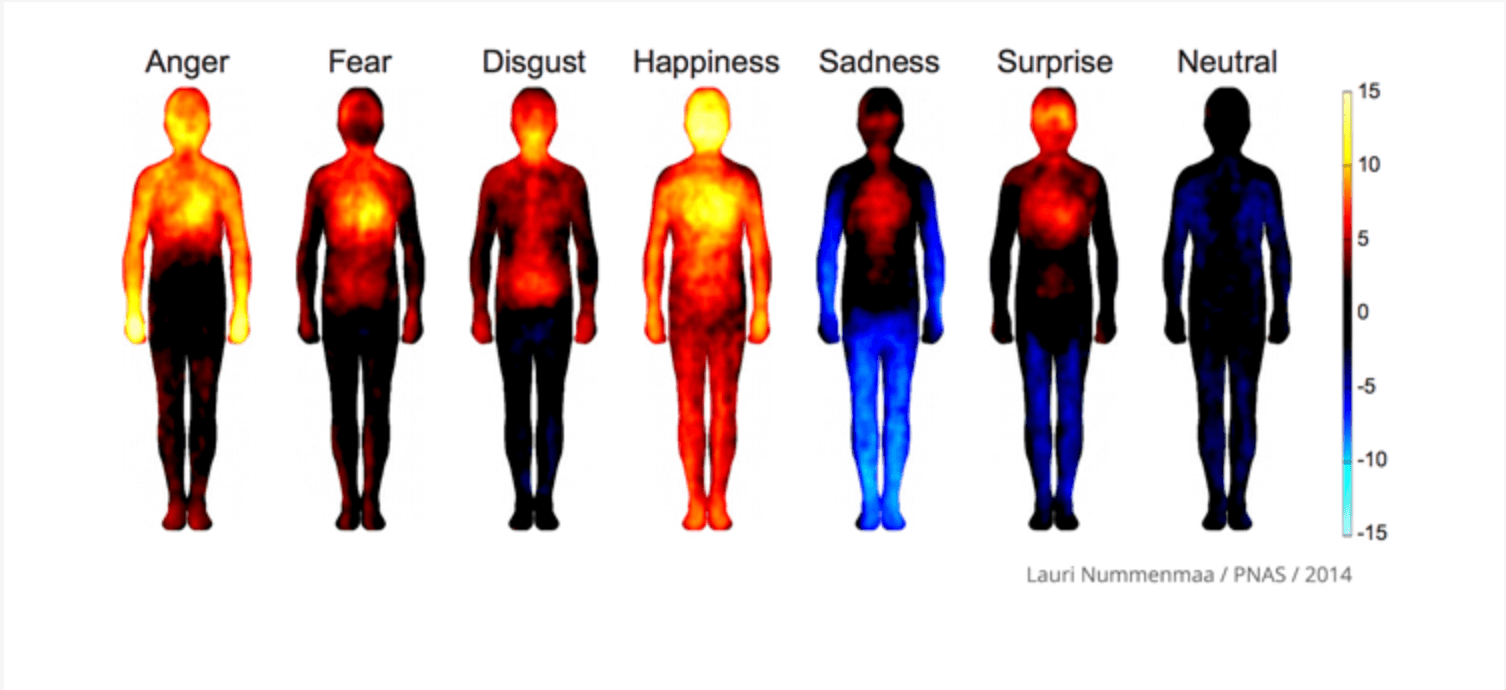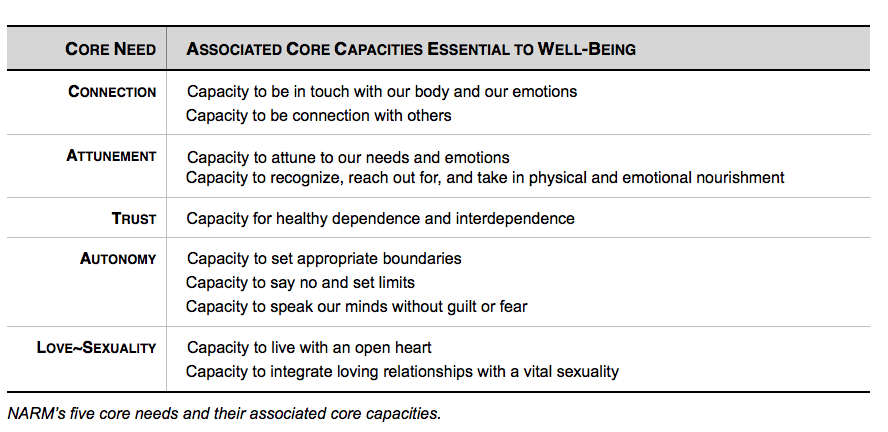Welcome
Perhaps you were involved in an overwhelming event: personally, through loved ones or as an eyewitness, recent or past, with or without clear memories.
Perhaps you were given a diagnosis that mainly feels like ‘you have to learn to live with it’ (fibromyalgia, chronic fatigue syndrome, irritable bowel syndrome, high sensitivity, …).
Perhaps medication, for example against pain or anxiety, will help you very little or not.
Maybe emotions ‘overwhelm’ you, seem to take over your body and mind (such as bottomless sadness, frantic anger, complete numbness, …), and make you do things that you regret afterwards, or that you don’t even remember anymore.
As a person directly involved (partner, parent, brother/sister, son/daughter) you may need personalized information and/or support.
Help?
Calling in the help of a psychologist, who can guide you from knowledge and own experience, is not an unnecessary luxury at times when life overwhelms you.
I myself have come a long way, both alone and with help. In this ‘school of life’ I have invested time, money and energy in both valuable and rather useless ‘projects’.
On a professional level the discovery of Somatic Experiencing (read more by scrolling down) lead to a major change, supported by osteopathy, yoga and Tai Chi,
Somatic Experience is a non-judgmental method that offers a new and hopeful view of trauma. It also enables us how the enormous survival energy that is ‘locked up’ in the body can be discharged in a careful way. Trauma symptoms can thus be prevented, decrease in severity and disappear. Inner peace and mental strength take up more and more space, and keep you in the here and now.
I got them ‘free’ on my trip.
With deep respect for those who seek and enter into a process of ‘letting go’,
I offer expert guidance in a safe environment, concrete, and with a sense of humor.
About Trauma
What can be symptoms of traumatic stress, or a severely disrupted nervous system?
Physical: both elevated and low heart rate or blood pressure, difficulty breathing (fast, shallow), cold sweat, tingling, both high and low muscle tone, exaggerated startle reflex, chronic pain, trouble sleeping or relaxing, low energy, exhaustion, indigestion, malfunctioning of the immune system , …
Mental/Emotional: tendency to anxiety and panic attacks, feeling ‘crazy’, angry outbursts, hyper-vigilance, racing thoughts, worrying, depression, dissociation, feeling disconnected from others, feeling of no choice, being overwhelmed by or ‘none’ emotions, no or extreme need for sex, feeling a burden to others, emptiness, feelings of inferiority, powerless, betrayed, blocked heart, the ‘black sheep’ …
Relational: withdrawal from social contact, always taking care of others, not recognizing or expressing one’s needs, giving oneself up to receive love/sex, always looking for the other person’s fault, making mistakes = going off, not being able to say ‘no’, others never show what you really think or feel, avoid direct conflict, love as a medium of exchange, ‘fight’ to be right…
Combinations: restlessness under the depression, muscle stiffness in one area of the body and low muscle tone elsewhere, alternating diarrhea and constipation, need for sex and not feeling anything, feeling exhausted and unable to sleep…
It’s not just about the event

Traumatic symptoms are not caused by the nature of an event. The same symptoms can occur in the victim of a traffic accident as well as in the person responsible for the accident, in a child after surgery as well as in the parents, in a person who has been poisoned and in someone who envisioned drowning. , both in a victim of (emotional or sexual) abuse and in someone who is confronted with the sudden death of a loved one, in someone who has experienced a natural disaster or in the person who witnessed a terrible event… and also in people who cannot remember such an event or ‘exclude’ certain events (such as complications during pregnancy or birth, fall from a ladder, visit to the dentist, …) but do have all kinds of ‘unexplained’ symptoms. It is true that traumatic events at a young age and/or persistent traumatization give rise to a complex tangle of symptoms.
While we have all experienced one or more overwhelming experiences, not everyone develops traumatic symptoms, needs professional help, or one does not feel ‘traumatized’. Also, for many of us it is (still) a loaded word that refers to a category of people we would rather not belong to.
And yet… why wait until you have to go to ’emergency’?
My Way Of Working
My working method is mainly based on approaches of:
– “SE”= Somatic Experiencing – a body oriented trauma treatment
– “ISP” = Integral Somatic Psychology- building capacity for embodying overwhelming feelings or emotional pain
– “NARM = NeuroAffective Relational Model – adressing complex attachment, relational and childhood trauma
– and “ACT” = Acceptance & Commitment Therapy – living a valuable life
(scrol down to read more about them)
The starting point of trauma therapy are the symptoms. A lot of attention goes into reducing the severity of the symptoms and the anxiety, ‘calming’ them to a tolerable point. At the same time, existing resources are reinforced, and possibly new ones sought. We will work with the emotions, images, sensations, behaviors, thoughts, which are related to the event(s) that is the basis of the trauma. I would like to emphasize here that a memory of the event(s) is not a necessary condition for working with trauma, and that talking about certain facts will only happen in small digestible pieces. The body will only let go of what it can handle, thus determining the rhythm of the therapeutic process. Intuitively, it is not a linear process. More and more you will be able to stay in the here and now, and enjoy it.
How long a counseling will last is different for everyone. If your main need is for psychoeducation about trauma, a few sessions will probably sufficient. If you suffer from persistent symptoms or symptoms that seem to alternate, you will benefit more from in-depth guidance. An accompaniment can be interrupted or stopped at any time, in consultation with the therapist.
Psycho-education can be a question in itself, it is also part of any guidance. Explaining/posting in an understandable language what trauma is, how symptoms arise, etc., is without a doubt one of my strong points.
SE – Somatic Experiencing
Somatic Experiencing is a body-oriented trauma treatment.
In response to danger, our defense system has three reactions: fight, flight or freeze. Our nervous system bundles an enormous amount of energy for this purpose. At the same time, this is an emotional state with feelings of fear, anger and helplessness. If we manage to flee or defend ourselves, and our organism can discharge that energy and express the emotions, there will be no trauma. If a fight or flight response is prevented/impossible, our organism will instinctively tighten. Simultaneously with the tightening, the energy is strengthened and held in the nervous system. The emotions also become more powerful and our nervous system becomes overwhelmed. At that point, immobility takes over and we will either freeze or give up. A condition usually referred to as shock. Outwardly, this can take various forms: no longer being able to stand on your feet, walking around without seeing what is happening around you, talking hurriedly without emotions,… The result can be that we split off part of our feeling, or that the whole system remains react as if there is still danger. This situation can continue for years. The human freeze response cannot be discharged “by itself” so easily, and this is how trauma symptoms arise. Freezing is an involuntary survival response, meaning that in nature it is no better or worse than fight or flight, nor is it consciously controlled by us. Yet in most modern cultures there is little understanding for this reaction, and it is quickly condemned (and felt) as a weakness.
Calming the overloaded nervous system

Characteristic of Somatic Experiencing is the way in which the overloaded nervous system is brought to rest. During the treatment, the client is given the opportunity to release the great tension that is stored in his body in small steps. You work directly with the body (autonomic nervous system), without having to touch the client. This method never works with re-experience as the risk of re-traumatization is too great. Telling extensively about the traumatic event therefore does not happen. When the story is worked on, it will be cut into small, digestible pieces, and never more than the body can bear at that moment. A story, a memory of an event is not even necessary. It is perfectly possible to work with the language of the body. An eye movement can sometimes say more than 100 words. The intention is always to create more space in the nervous system, so that the blocked survival energy can be released little by little and there is (back) more capacity and organization. The focus is on trusting and making contact with the self-healing mechanisms that are present in every body.
Background

The founder of Somatic Experiencing is Peter Levine, Dr in both medical biophysics and psychology. He worked, among other things, as a stress consultant in the Space Shuttle project of NASA.
As an ‘extension’ within SE, Larry Heller developed the Neuroaffective Relational Model (NARM). This model works with the life force. In the course of our (young) life we ??develop ways to adapt to the environment/situations. Heller calls these survival styles, because they were useful at the time. These patterns are fixed in our nervous system, and therefore feel like ‘real’, ‘good’ too. However, if the experience of the present is disturbed by it, symptoms arise. This can be very confusing, because usually an ‘error’ experience is also associated with it. For example, if you have built an identity of ‘I am strong and can control everything’ (which is perceived as good), then the feeling of powerlessness, sudden fits of anger, or intense physical reactions can lead to the judgment ‘ I am weak’ (which is perceived as bad). The way of working brings attention to the patterns that prevent a person from being present with himself and others at this point in his/her life. This is done in a non-judgmental way, which is liberating in itself. It builds on the client’s strengths using two aspects of mindfulness, both physical and conscious awareness. The use of resource-oriented techniques that work with subtle changes in the nervous system significantly increases effectiveness.
ISP – Integrale Somatische Psychologie
Building capacity for embodying emotions
Integral Somatic Psychology™ (ISP™) is an approach to improve therapeutic outcomes through greater embodiment of emotional aspects of experiences and the related suffering from emotional pain.
Integral Somatic Psychology was developed by Raja Selvam, PhD. It is a comprehensive approach to embodiment based on Western as well as Eastern psychology. It is currently taught in over a dozen countries in North America, Europe, and Asia. Integral Somatic Psychology is not another approach to doing therapy. It is a complementary modality developed to increase the effectiveness of psychological work in any therapeutic approach.

The 4 steps of emotional embodiment
1. The situation:
Here we will explore the details of the emotionally challenging situation.
2. The emotion:
Here we talk about innate resistance we all have against unpleasant emotions. And why it is important to face unpleasant emotions
3. The expansion and the regulation:
Then we expand the emotional experience to more parts of the body, to regulate the body and the emotion. We work with defenses in the body, brain, or energy of the client using tools such as awareness, intent, visualization, breath, movement, self-touch, therapist’s touch, bodywork, or energy work.
4. The integration:
Eventually the capacity to stay with and tolerate an emotion increases.
NARM – NeuroAffective Relational Model
Adressing complex attachment, relational and childhood trauma
NARM is an advanced clinical model for addressing attachment, relational and developmental trauma, by working with the attachment patterns that cause life-long psychobiological symptoms and interpersonal difficulties. These early, unconscious patterns of disconnection deeply affect our identity, emotions, physiology, behavior and relationships. Learning how to work simultaneously with these diverse elements is a radical shift that has profound clinical implications for healing complex trauma. With NARM we gain greater understanding of the nature of adverse childhood experience (ACEs).
This developmentally-oriented, neuroscientifically-informed model, as outlined in Dr. Laurence Heller’s book, co-written with Aline LaPierre, PsyD, Healing Developmental Trauma, emerged out of earlier psychotherapeutic orientations including Psychodynamic Psychotherapy, Attachment Theory, Cognitive Therapy, Gestalt Therapy, and Somatic Experiencing®, and bridges traditional psychotherapy with body-mind approaches within a context of relational practice. NARM is a mindfulness-based clinical treatment, as its method is grounded in a phenomenological approach to addressing identity and consciousness of self – who we truly are beneath these patterned ways of relating to ourselves and the world. Seen in this way, healing complex trauma is a vehicle for transformation on a personal and collective level.
The NeuroAffective Relational Model™ (NARM) brings the current understanding of self-regulation into clinical practice. This resource-oriented, non-regressive model emphasizes helping clients establish connection to the parts of self that are organized, coherent and functional. It helps bring into awareness and organization the parts of self that are disorganized and dysfunctional without making the regressed, dysfunctional elements the primary theme of the therapy.
The NARM model:
– Integrates both a nervous system based and a relational orientation.
– Brings developmentally-informed clinical interventions that use body-mind mindfulness and an orientation to resources to anchor self-regulation in the nervous system.
– Works clinically with the link between psychological issues and the body by helping access the body’s self-regulatory capacities and by supporting nervous system re-regulation.
– Uses mindful inquiry into the deeper identifications and counter-identifications that we take to be our identity.
In the NARM approach, we work simultaneously with the physiology and the psychology of individuals who have experienced developmental trauma, and focus on the interplay between issues of identity and the capacity for connection and regulation.
NARM uses four primary organizing principles:
– Supporting connection and organization
– Exploring identity
– Working in present time
– Regulating the nervous system
Five Organizing Developmental Themes
We adress five developmental life themes and associated core resources that are essential to our capacity for self-regulation and affect our ability to be present to self and others in the here-and-now:

About me
 Already more than 20 years ago I graduated as a clinical psychologist. I had also taken the aggregate training course, you never know, as well as a Spanish course. The latter made it possible to do part of my internship in a polyclinic in Madrid. I had completed the first part in the psychiatric clinic of the (then) Brothers Alexians in Tienen, in the alcohol and drug addiction department. I already had a diploma in social assistant. As an internship for this, I worked for six months with migrant youth in youth center Meulenberg (Houthalen).
Already more than 20 years ago I graduated as a clinical psychologist. I had also taken the aggregate training course, you never know, as well as a Spanish course. The latter made it possible to do part of my internship in a polyclinic in Madrid. I had completed the first part in the psychiatric clinic of the (then) Brothers Alexians in Tienen, in the alcohol and drug addiction department. I already had a diploma in social assistant. As an internship for this, I worked for six months with migrant youth in youth center Meulenberg (Houthalen).
After finishing a research project at the K.U.Leuven, I taught Dutch to non-native speakers within basic education Leuven for more than 10 years. We were in daily contact with people traumatized by war, persecution, you name it.
After motherhood, moving house and a thorough retraining, I have built a ‘career’ as a jewelery designer that I am now slowly phasing out but have no intention of stopping. Never worked as hard as the last 10 years … but incredibly instructive, and … what a satisfaction!
From 2010-2013 I followed the Somatic Experiencing Practitioner training (read more by scrolling up). Since 2014 I have been assisting in training in Spain, and since 2016 also in Mexico. It concerns a 3-year, in-depth training for shock (and developmental) trauma treatment, and the (possible) influence of trauma in syndromes. A basic requirement is that as a participant you experience the way of working ‘firsthand’. Remarkable how all the puzzle pieces fell/fall into place. In Belgium there are only a handful of people who offer this expertise. Additional workshops on shame and guilt, and trauma work with refugees, resp. victims of (terrorist) attacks.
I also followed a 6-day ACT training. ACT or Acceptance and Commitment Therapy is one of the new forms of therapy within behavioral therapy.
The goal of ACT is to lead a valuable life, living in a way that corresponds to what is important to you and what gives you energy. It helps you to learn to live more consciously and to get more out of life than what you are doing now.
I now work as a licensed independent psychologist in my home practice.
Between the lines

Besides the indication of the facts of my foundation and life journey, an at least as important part of my story is between the lines, with ‘trauma’ as the common thread.
A few additions, briefly, because I hardly care to look over my shoulder anymore.
I am the fifth in a family of seven children, 5 of whom are boys, and parents who went through puberty during the war years. It was certainly not a favorable base.
I grew up on Meulenberg, which literally and figuratively shaped my ‘view of the world’ in terms of smells, colours, sounds, tastes, … This piece is priceless.
This is followed by years with periods of illness, with deep wells, dark days and sleepless nights, mental and physical pain, filling up voids or sometimes drowning, doubt, restlessness, fatigue, a lot of useless medication, humiliating examinations, hypothetical diagnoses, incomprehension, little tears, (apparent) hardness, screaming without sound, words without story, fear, loneliness, rebelliousness, hyperalertness, countless question marks …
Did it prevent me from functioning ‘in the outside world’? Yes and… no, because luckily there are always resources available in parallel, both internally and externally, even if you do not ‘see’ them at times. My story is not complete without mentioning friendship, love, a listening ear, a hand to hold, laughing, laughing a lot, making good food together, music and dancing, offering and receiving help, the dogs, the walks in nature, the trips with those few months in Ghana as an outlier, books, studies and training, the chats, being creative, the sun on my skin, Spain and Spanish, yoga and Tai Chi,… and as icing on the cake: my daughter.
In summary: I am human, so with scars. Sometimes they still itch. Probably because I keep growing…

Appointments
You can make an appointment via the Contact form, email or by telephone (scroll down). In any case, speak in/write down your name and telephone number, possibly with a time/day on which I can reach you. I will in any case contact you back as soon as possible. If possible, briefly describe your symptoms.
At the moment I mainly offer counseling for adults or young adults. During an introductory meeting, we will look together at your symptoms and request for help. You will also receive information about the (im)possibilities of the therapy for you.
If you, as the parent of a child or teenager, experience a sense of ‘recognition’, please do not hesitate to contact us. Whether counseling is started with your child will be determined in an extensive introductory meeting.
Sessions can take place in Dutch, English or Spanish.
Each session is by appointment.
The rate for a session of one hour is 90 Euro.
20 Euro is charged for each additional quarter of an hour.
Payment is made at the end of each session (cash, Bancontact app, bank transfer).
A more extensive session is best requested in advance. In addition, I plan enough time in any case to allow an extension of fifteen minutes.
Address home practice: Bredeneakkerstaat 23, 3891 Gingelom
No waiting area provided, sign up at the agreed time.
You can park in the driveway in front of the house, or across the street.
You may have to cancel or reschedule an appointment. We’ll look at that together.
For any cancellation less than 48 hours before the appointment, the session will be charged. Appointments on Monday must therefore be canceled no later than the Wednesday before.
If you simply do not show up for an appointment, you will also pay the full amount.
A number of services provided by clinical psychologists are reimbursed by the health insurance companies. For more information, please contact your health insurance company.
Contact me
You can contact me via:
- tel: 0498/80 94 01
- info@lutschops-psycholoog.be
- or via the contact form below




